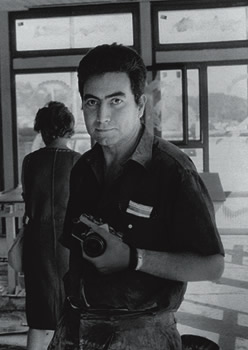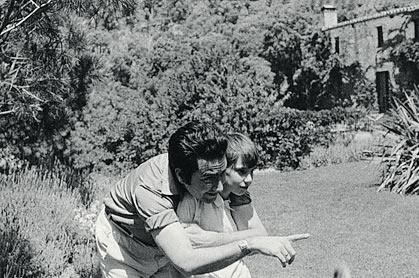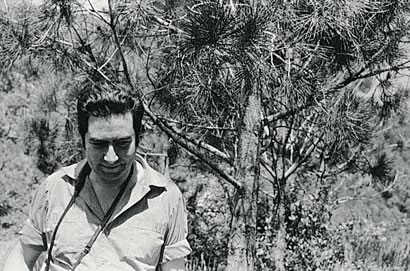|
SUITE MONTSENY: PHOTOPAINTINGS
Whosoever seeks to know the work of Antoni Tàpies in all its amplitude will have to delve into differing depths of technique and materials, from among which we now salvage the barely known method of ‘photopainting’. Photopaintings are works in which the light and the chemical agents utilized in the photographic process totally or partially replace the pigments of the picture-making process, despite being used by recourse to the gestures or tools specific to painting (like brushes of one sort or another). Photopainting is usually combined with the ‘photogram’ or the ‘chemogram’, or with both. Photograms are traces of objects produced by the pure action of light on photosensitive surfaces, and hence without the intercession of a camera. Chemograms are traces produced by the action of chemical agents, also on photosensitive surfaces. The series of images presented here is included within the so-called Suite Montseny, in honor of the highest mountain in the province of Barcelona, and also consists of drawings and paintings, albeit somewhat later in date, namely from the early 80s, which reveals the enormous hold the natural beauty of this landscape has always had on Tàpies. It must also be added that these prints were never considered as finished or definitive works by the artist himself (whence the absence of both signature and title, and their non-inclusion in the catalogue raisonné of Tàpies’s work) and have been recently recovered from the muddle of a studio storeroom full to overflowing with trial runs and half-finished projects awaiting final judgment on the part of their creator.
In any event their exhibition is only justified if it is made abundantly clear that these are unfinished works, subject therefore to doubt and to a final self-searching, and that they merely seek – as in the case of the preceding artists – to afford us greater understanding of the creative process of the artist. Tàpies began to be interested in photography as a result of his meeting with Marcel Zelich and the subsequent friendship he had with him. Zelich was a German citizen of Turkish origin who’d taken up residence in Barcelona just after World War II. A cultured man, a lover of music and the arts, the rapid success of his company, which manufactured knitwear on imported looms, enabled him to devote much time to his great passion: photography. In January 1960 the Tàpies and Zelich families met while taking a few days rest in the famous Hotel Sant Bernat at the summit of the Montseny. An unforeseen snowstorm blocked all the access roads and thus prolonged their stay at the hotel. Probably because their respective children played happily together, the two couples spent long periods in each other’s company and at a certain moment Zelich invited Tàpies to work in his laboratory.
Tàpies subsequently began the series inspired in the Montseny, trying to put into practice ideas drawn from his conversations with Zelich. In fact Zelich understood the practice of photography in a rather traditional way; on the other hand Tàpies, despite being also interested in the realistic dimension (1) of the photographic medium, prioritized alternative and experimental ways of using it, like these photopaintings which integrate photograms and chemograms. Availing himself of these techniques, which belonged to the expressive heritage of the interwar avant-gardes, Tàpies incorporated a much more intimate degree of analysis of matter, having an almost X-ray quality. Tàpies and Zelich quickly drifted apart: it is beyond a knitwear manufacturer’s understanding that someone might allow himself to be seduced by dirty socks and stained sheets.
1. See Aguilera Cerni, A. & López, V.: ‘Tàpies y la cuestión del realismo’, in Cimal 27, Gandía, September 1978. |





